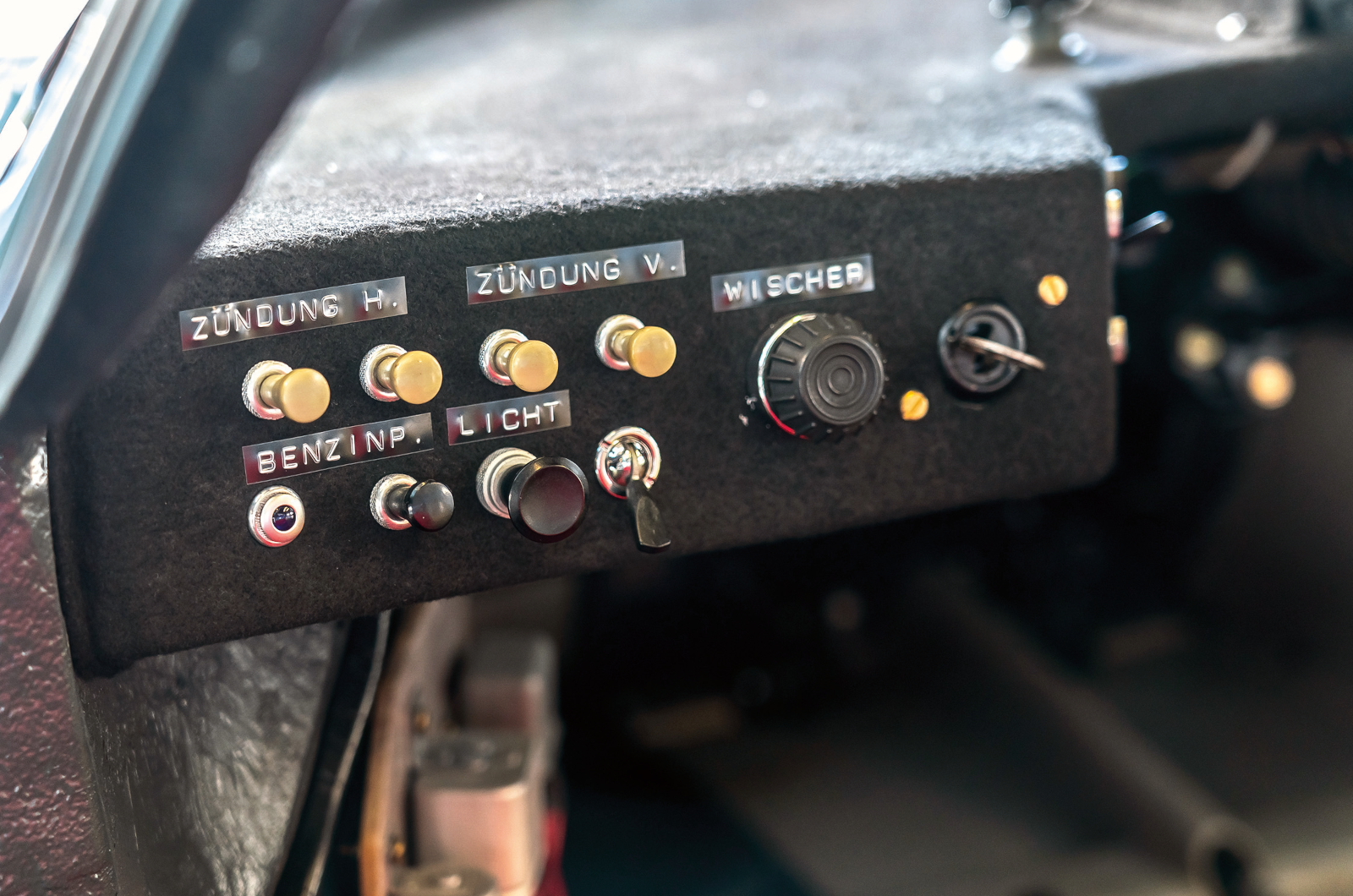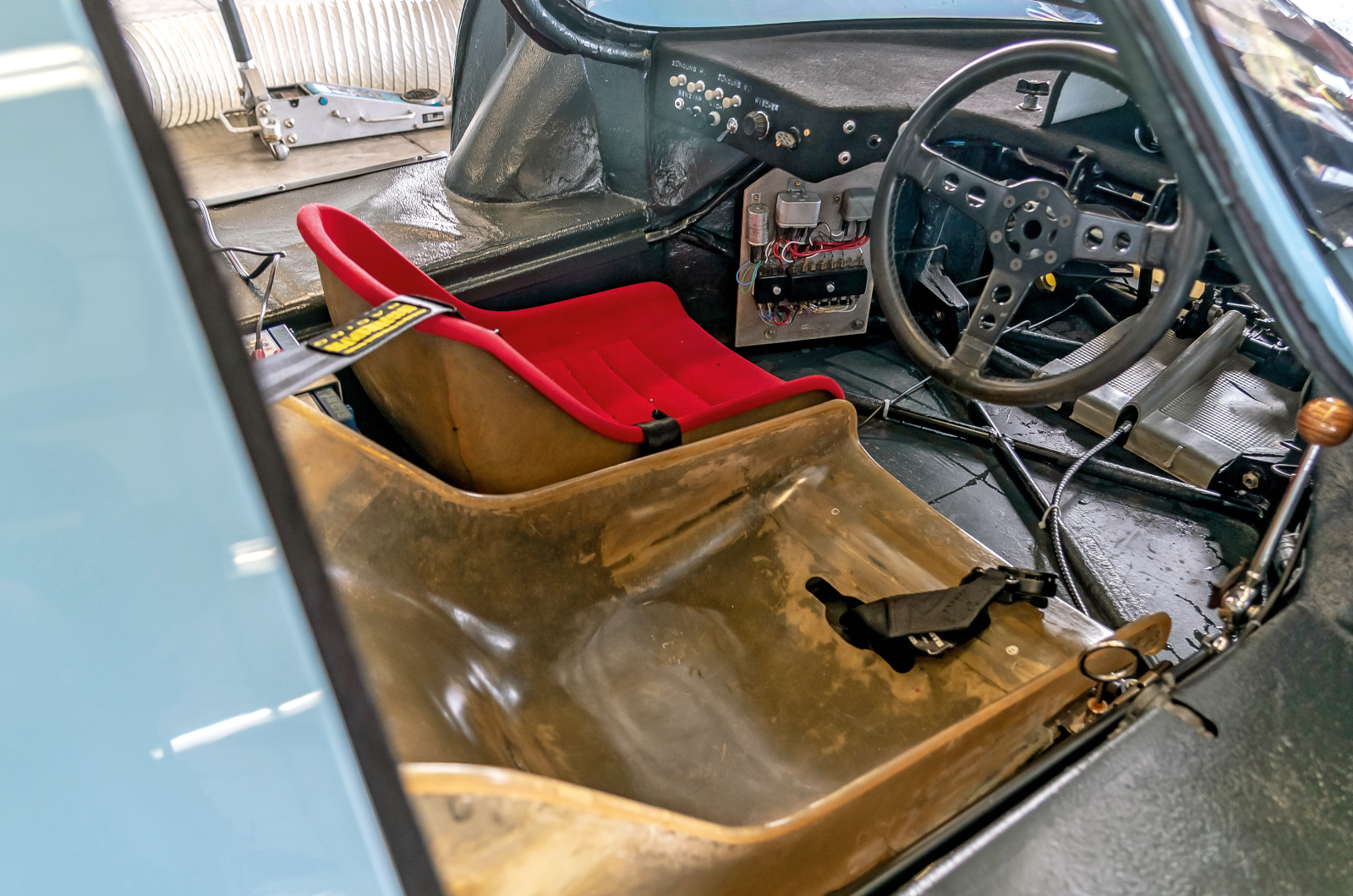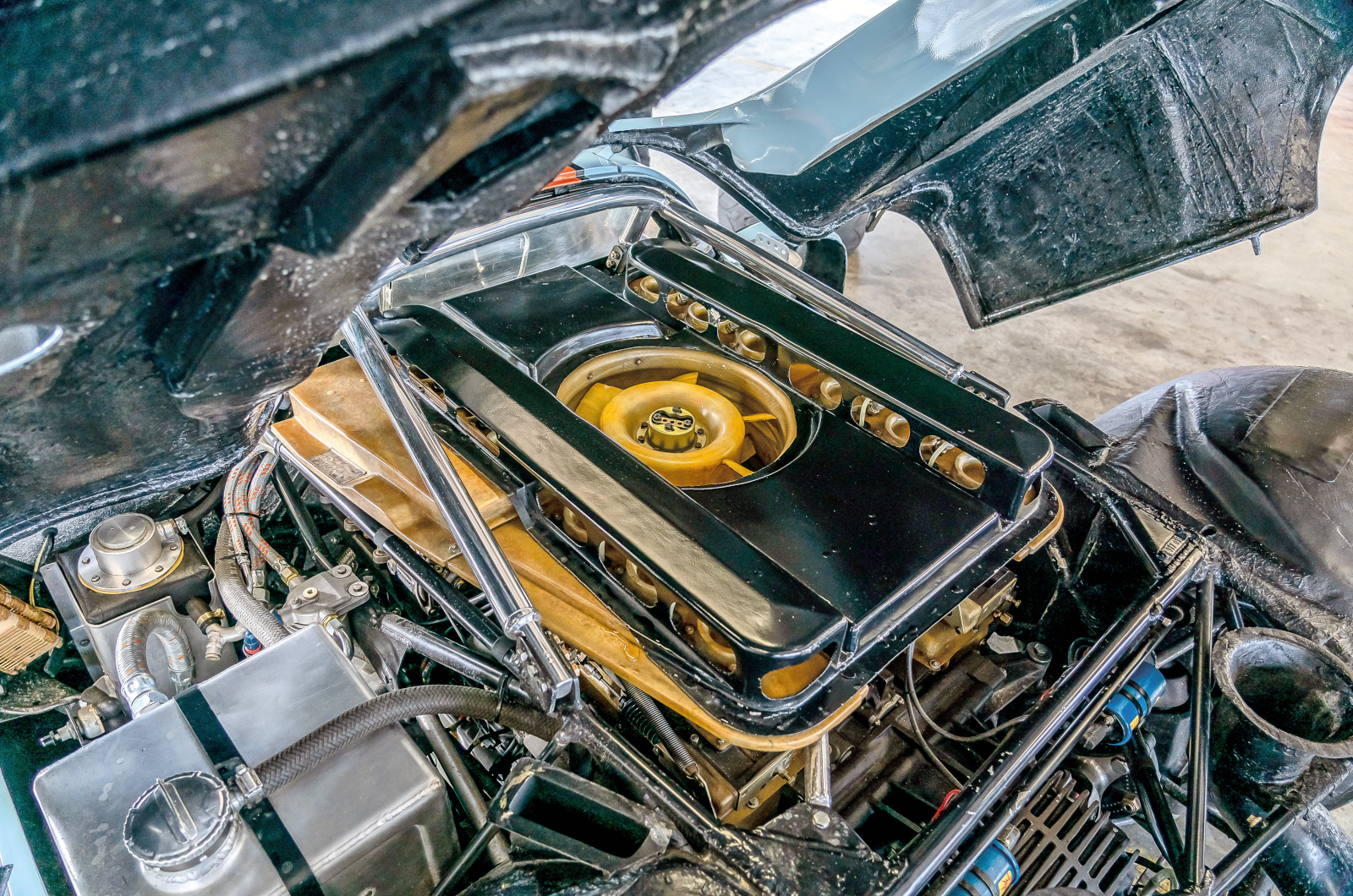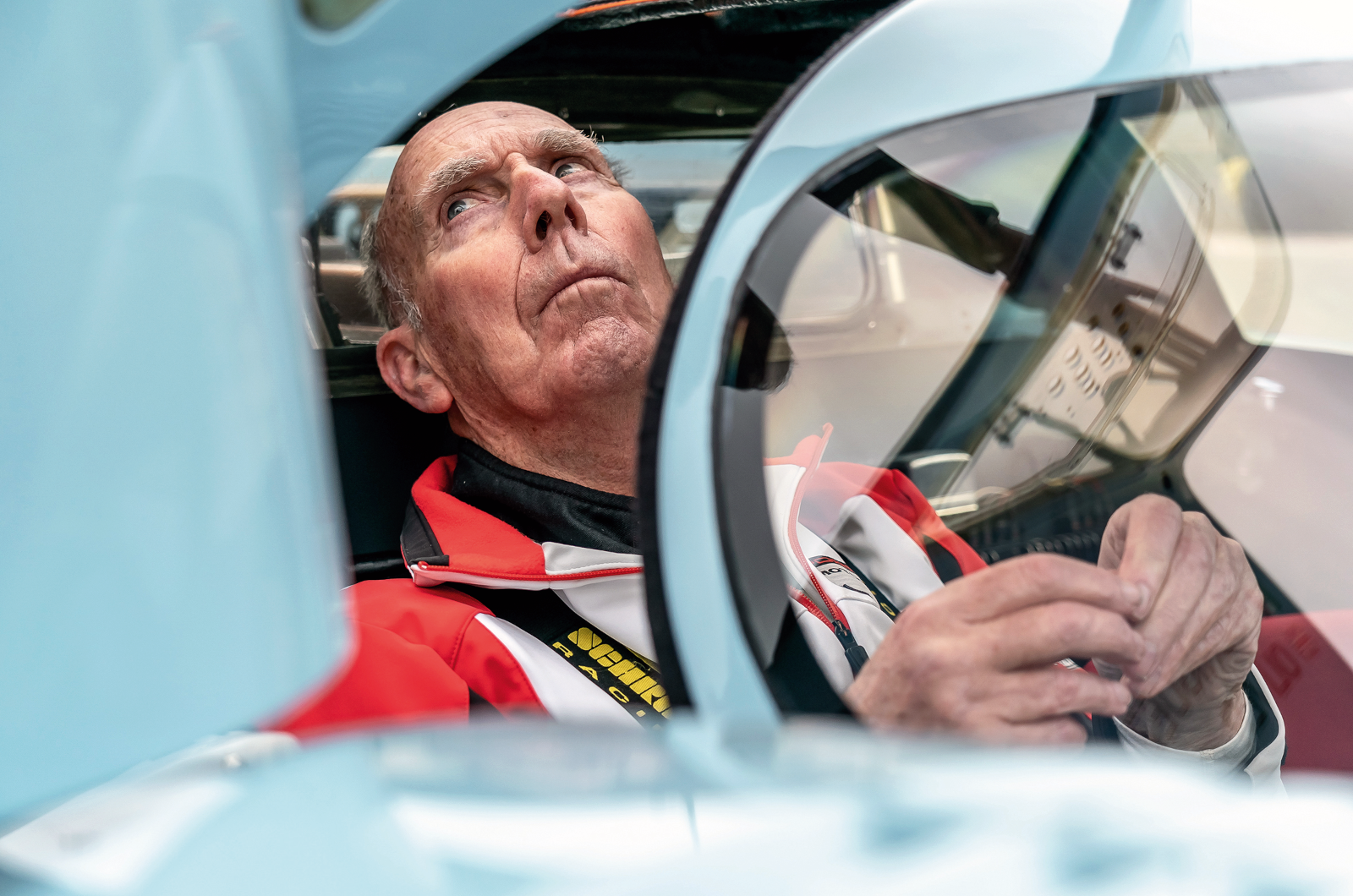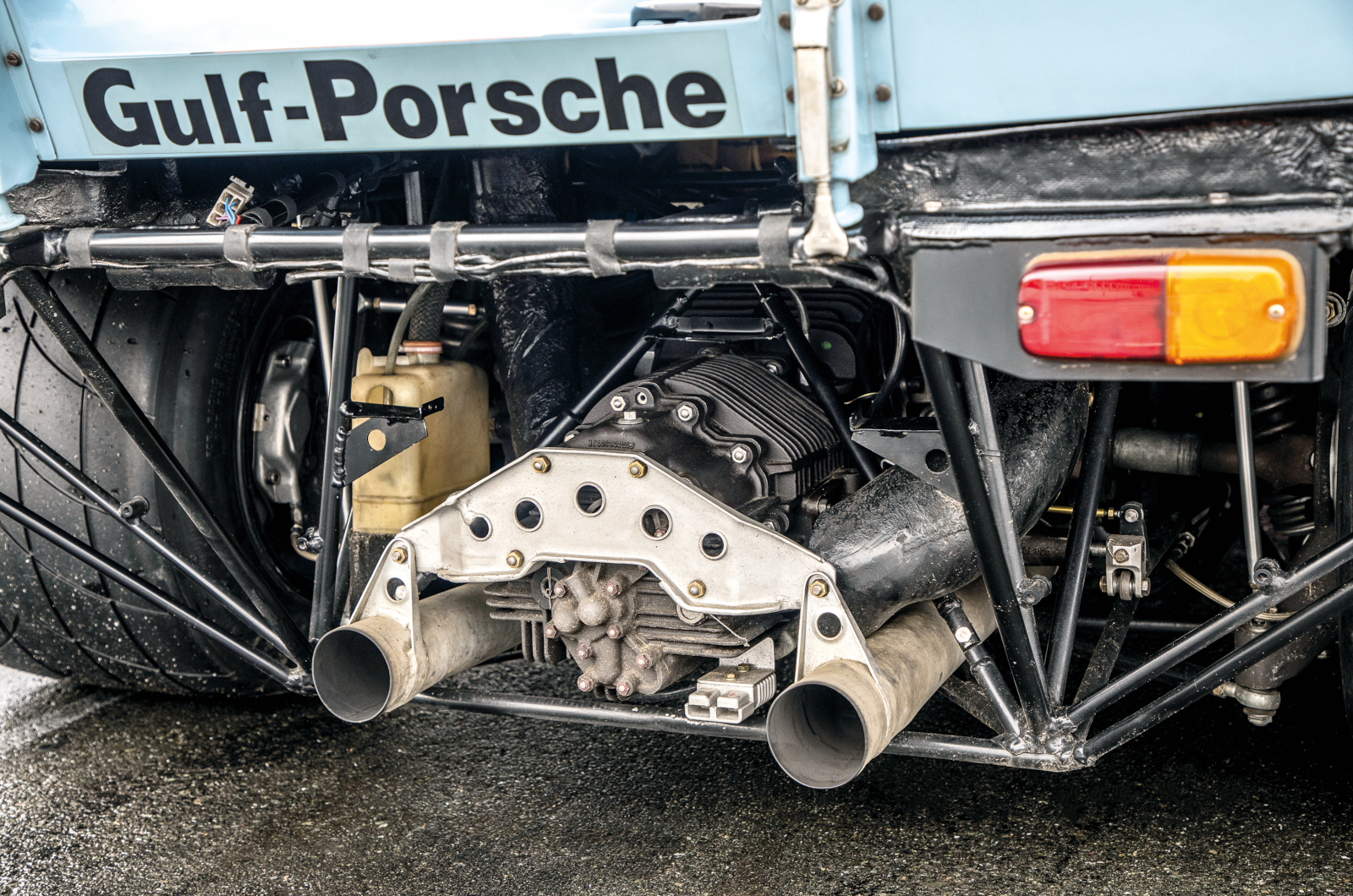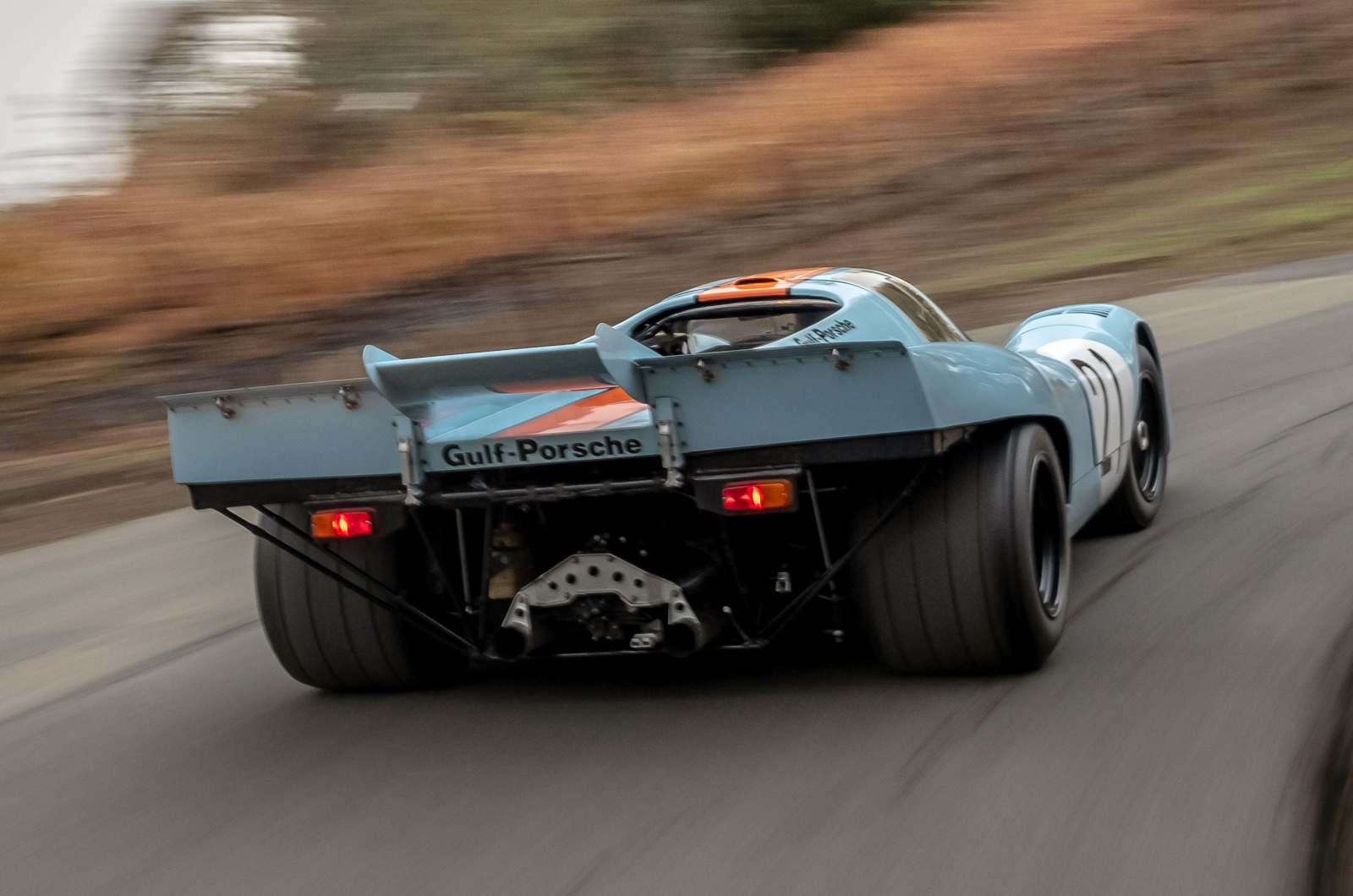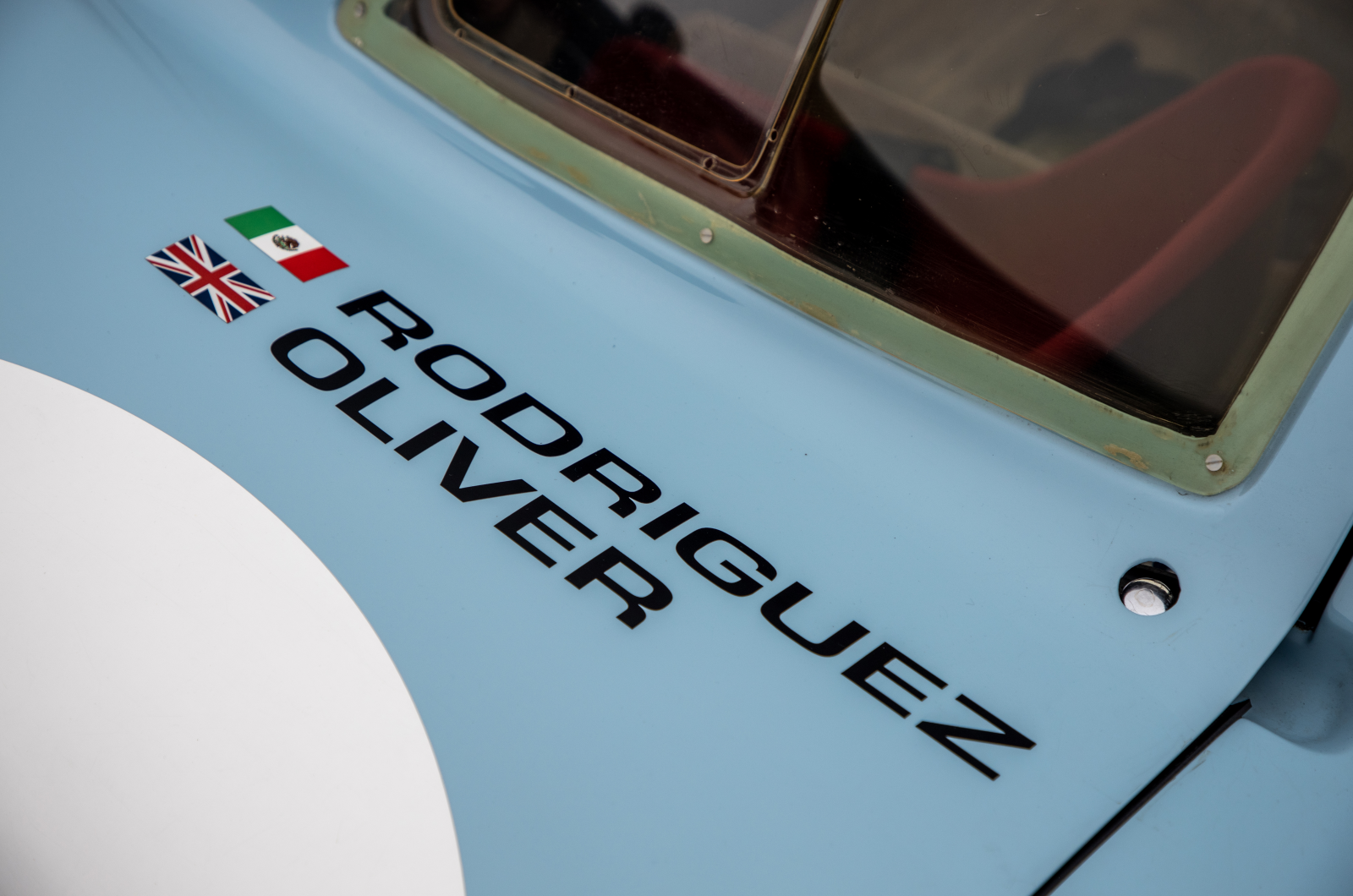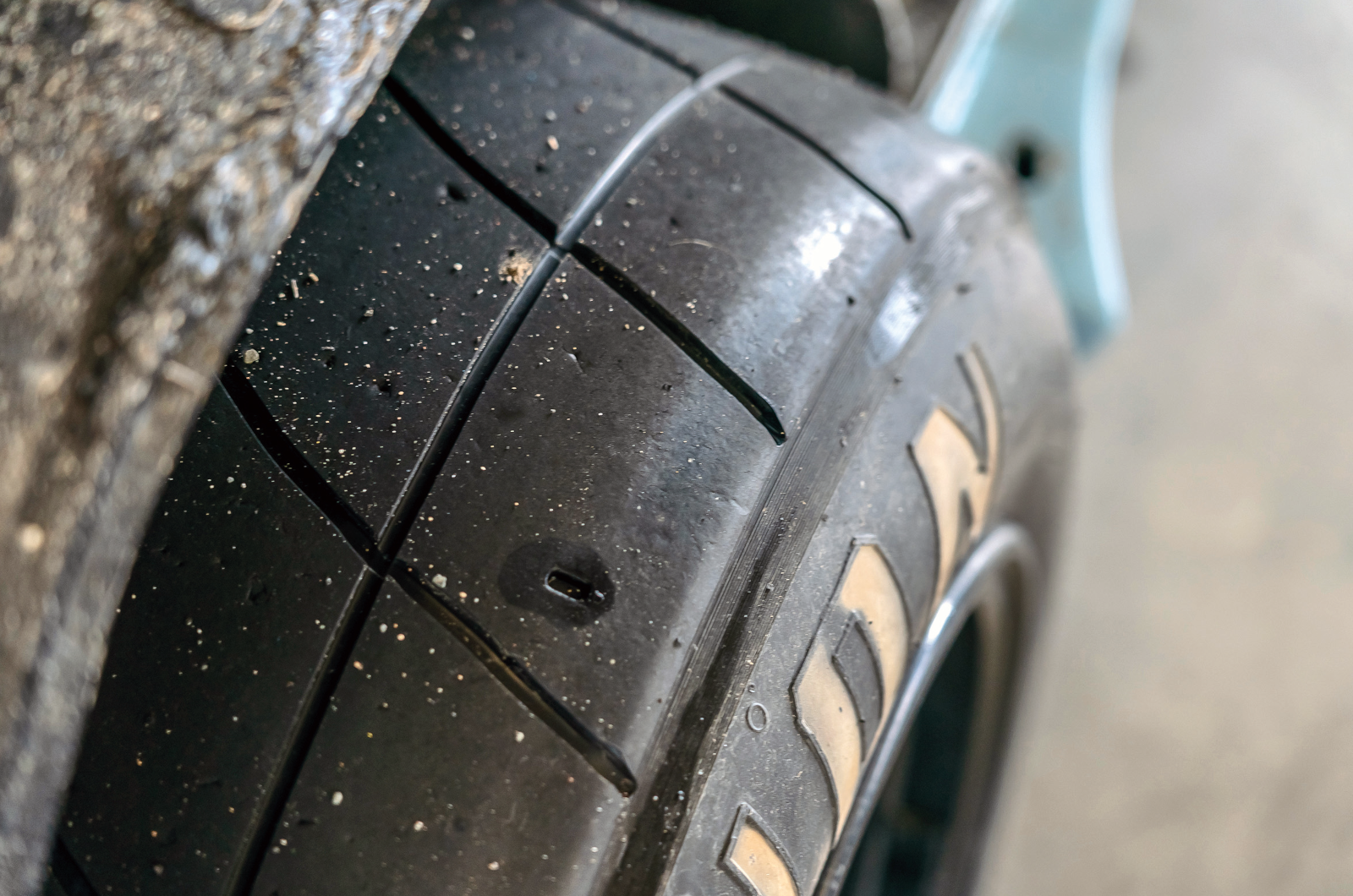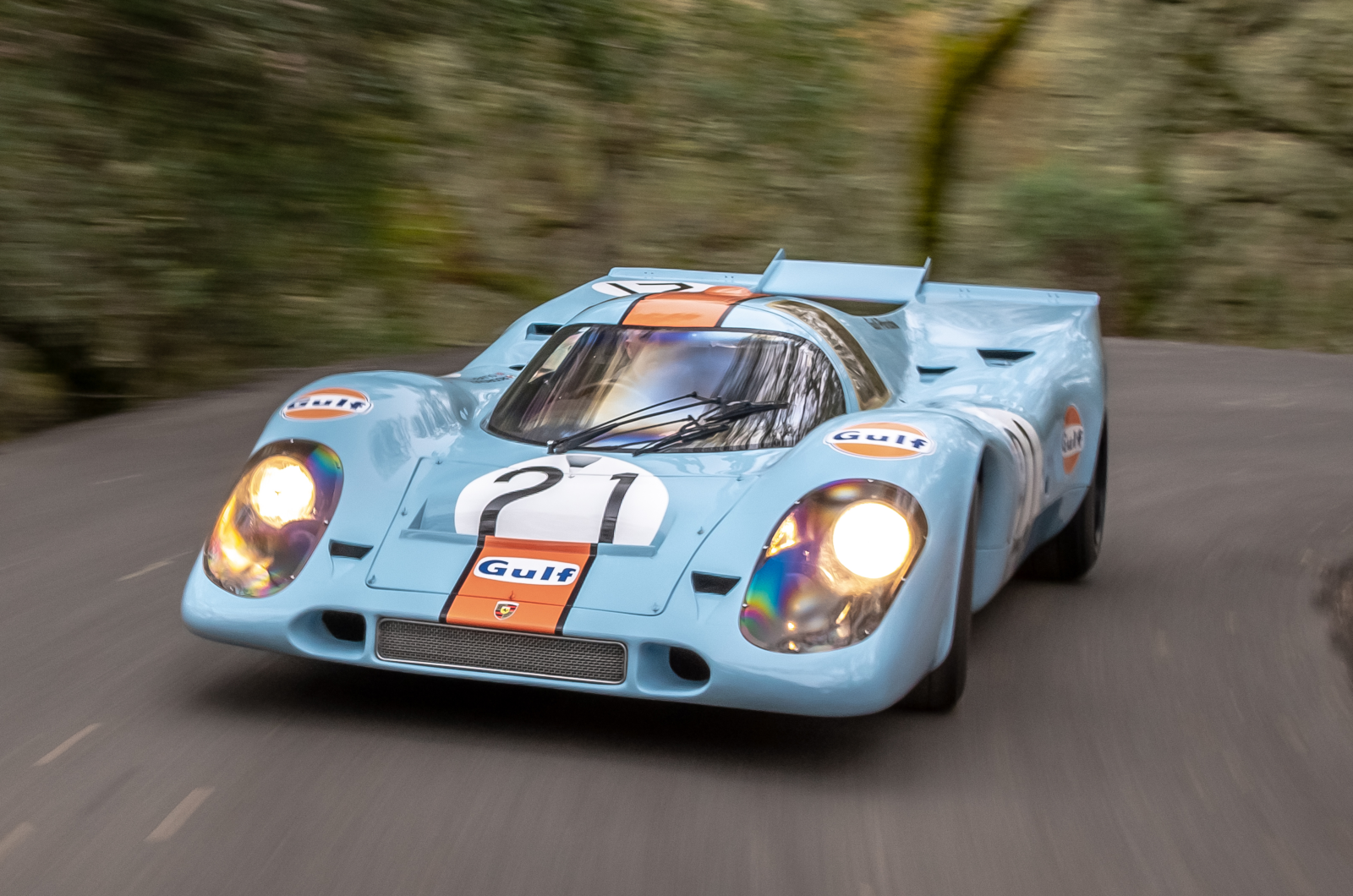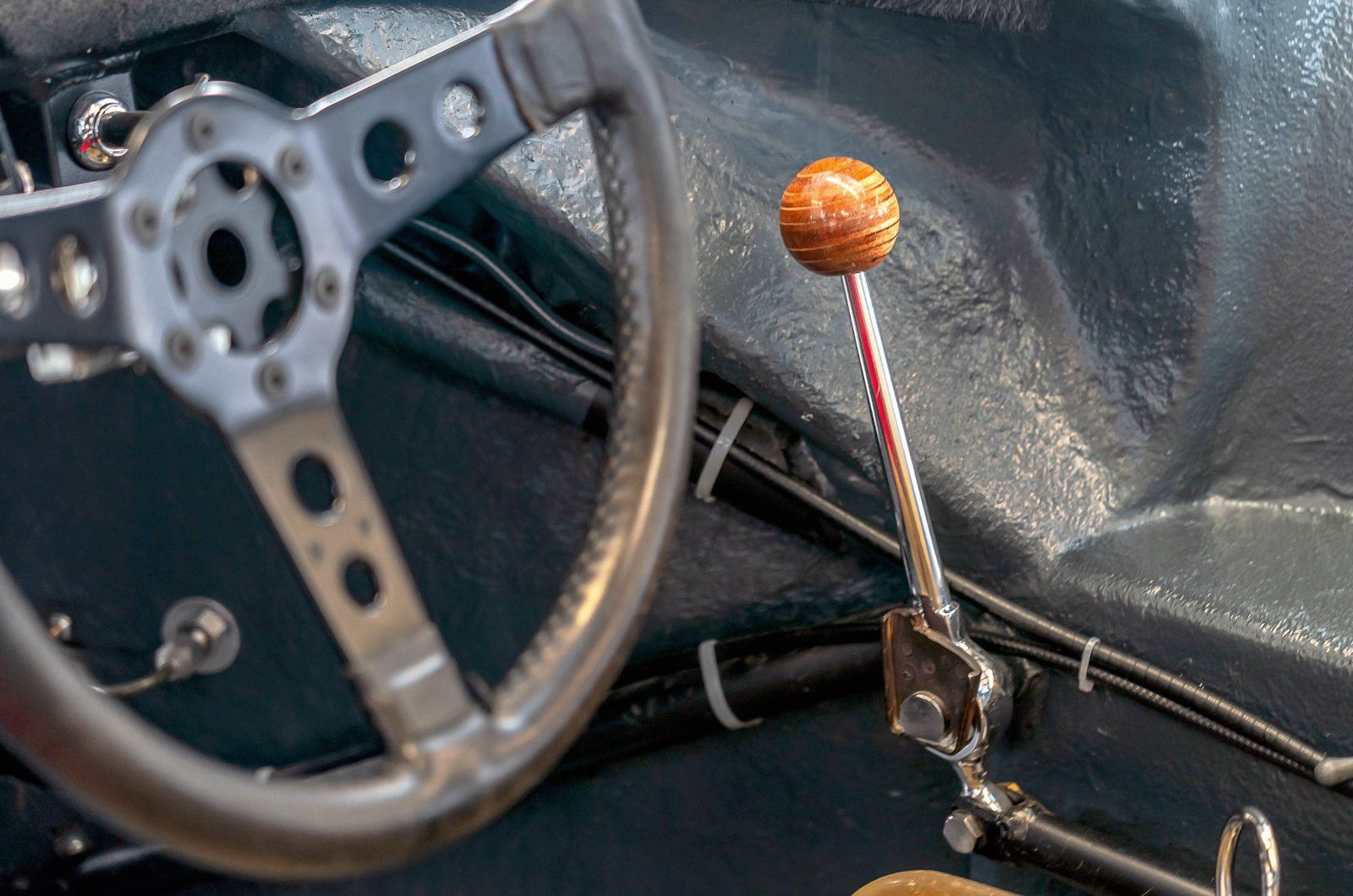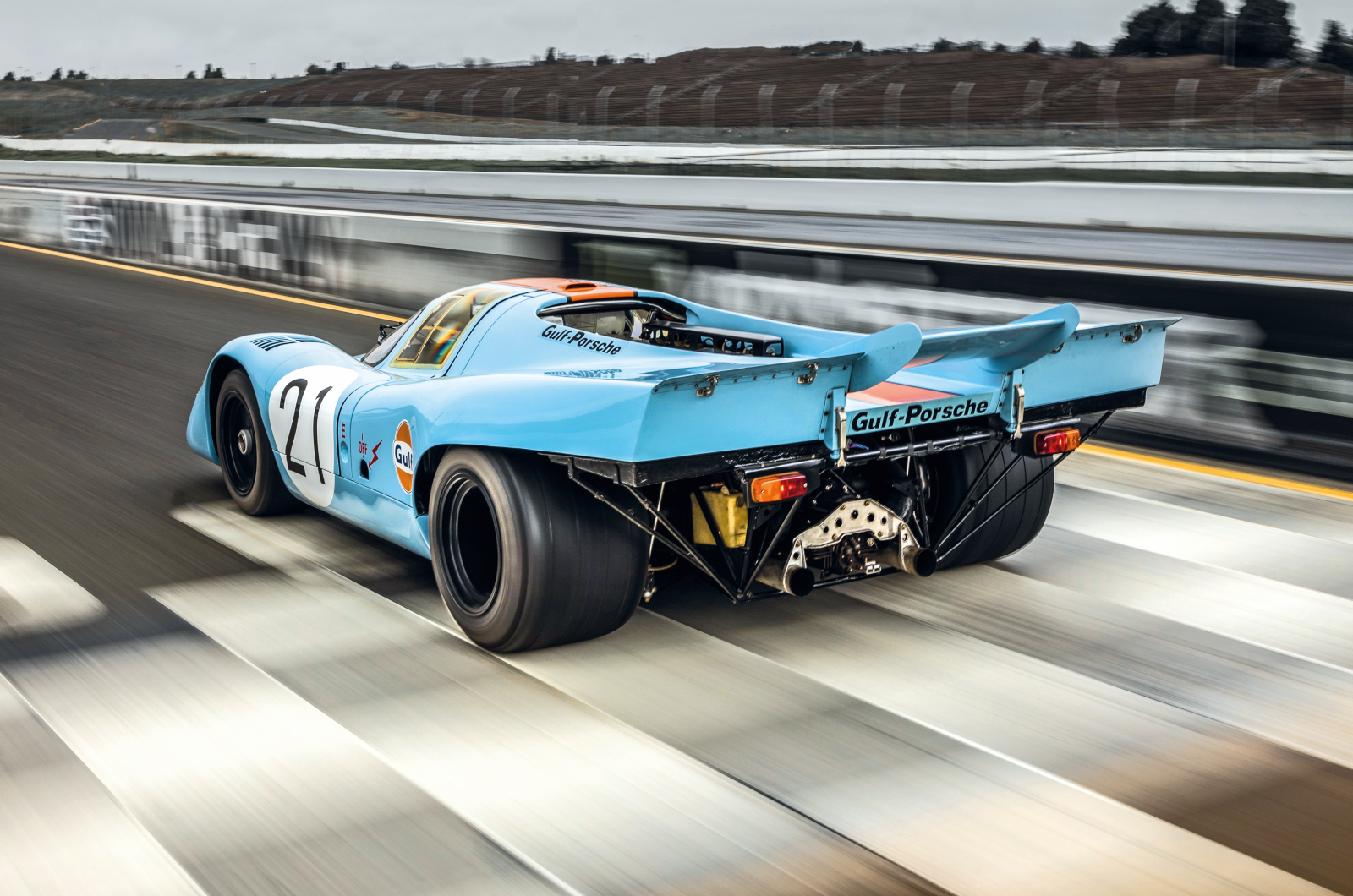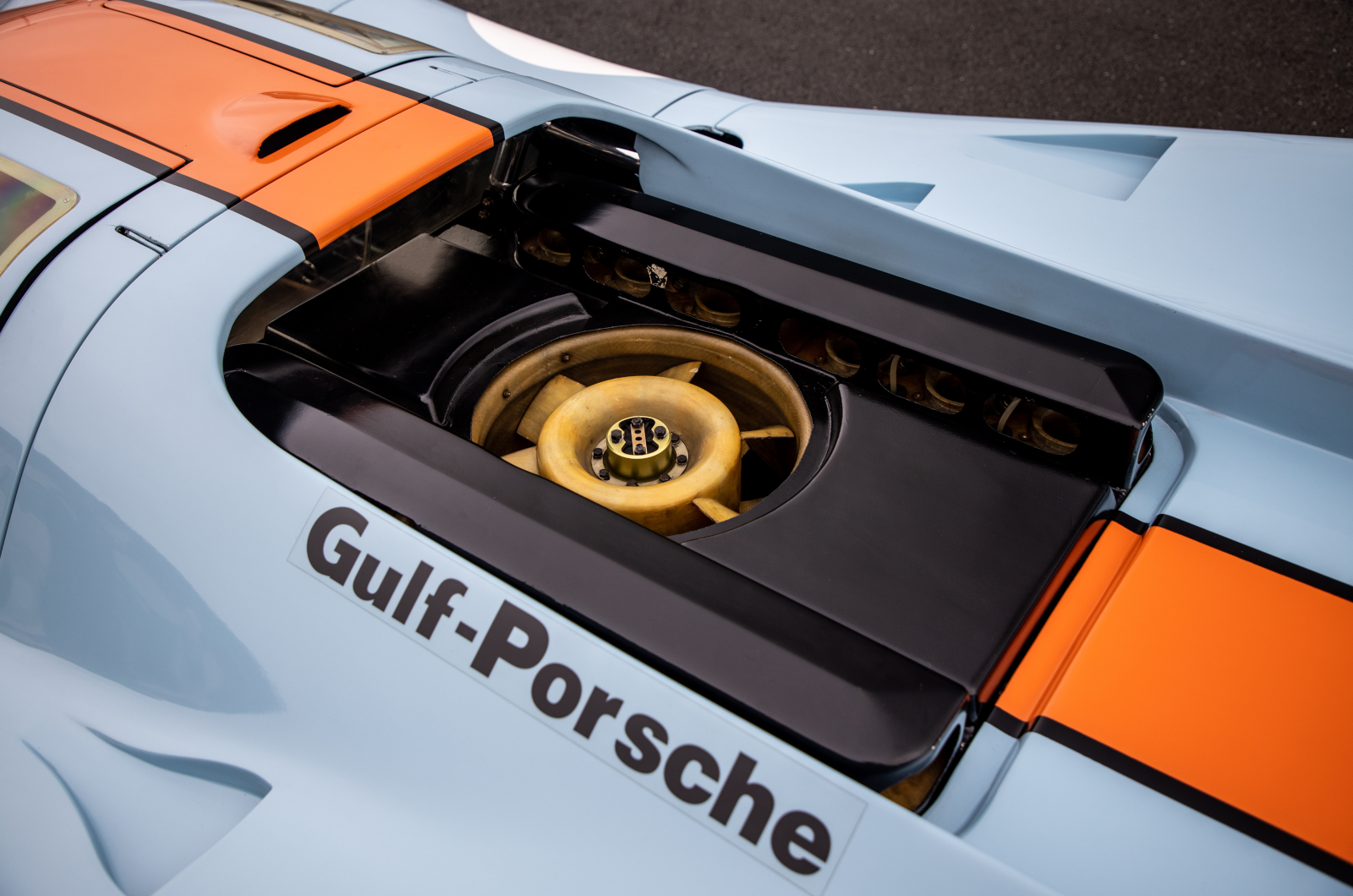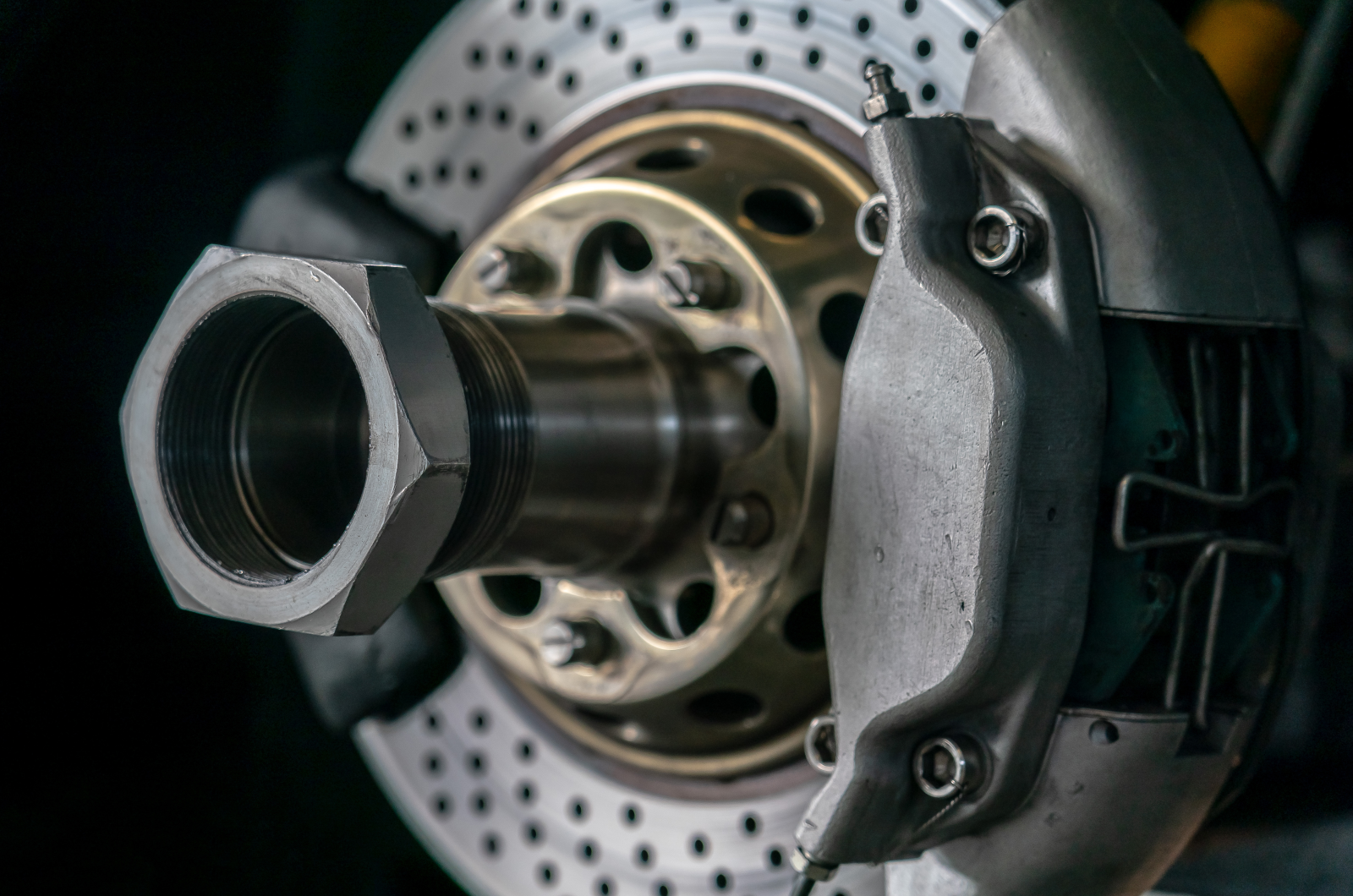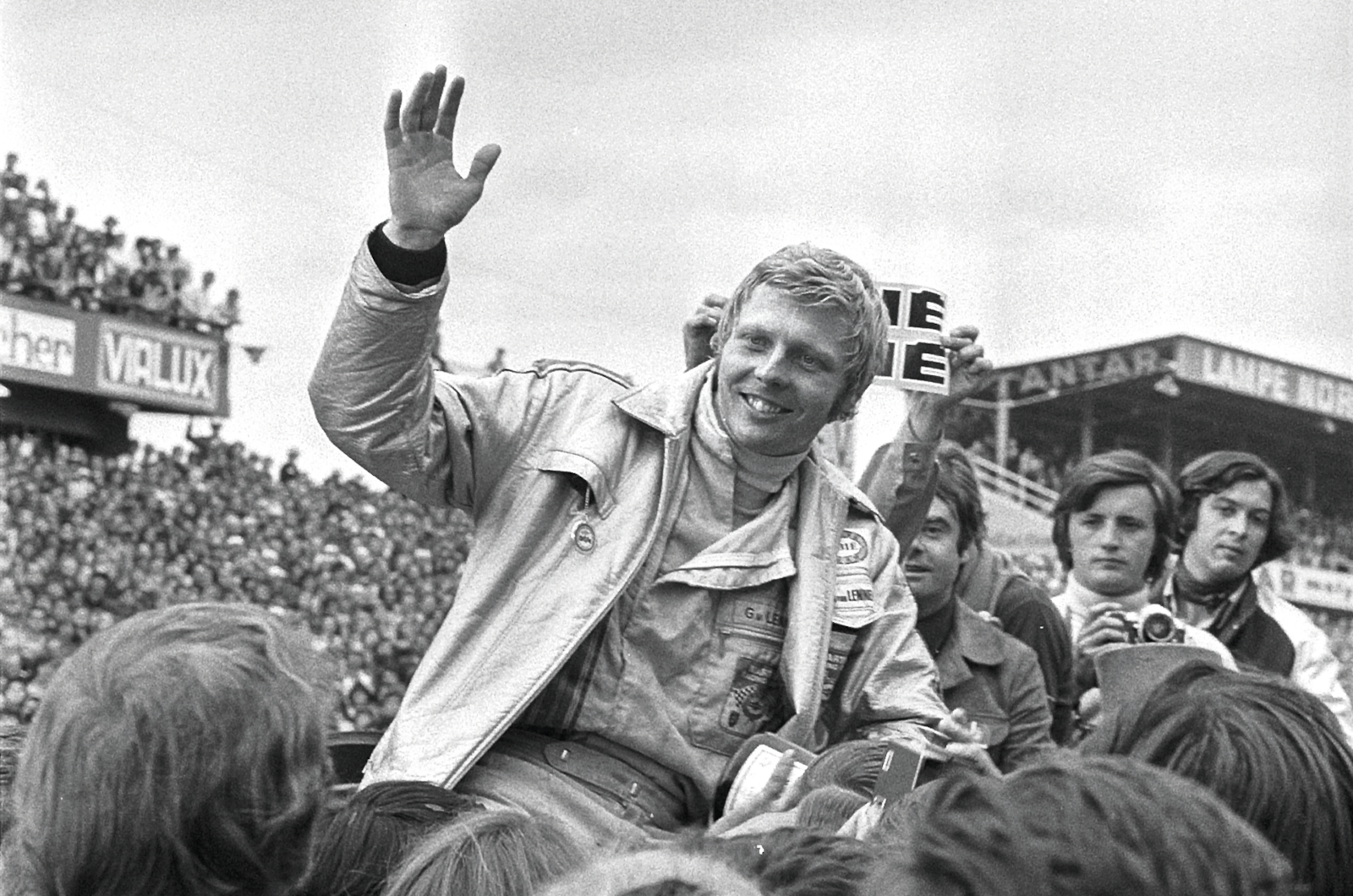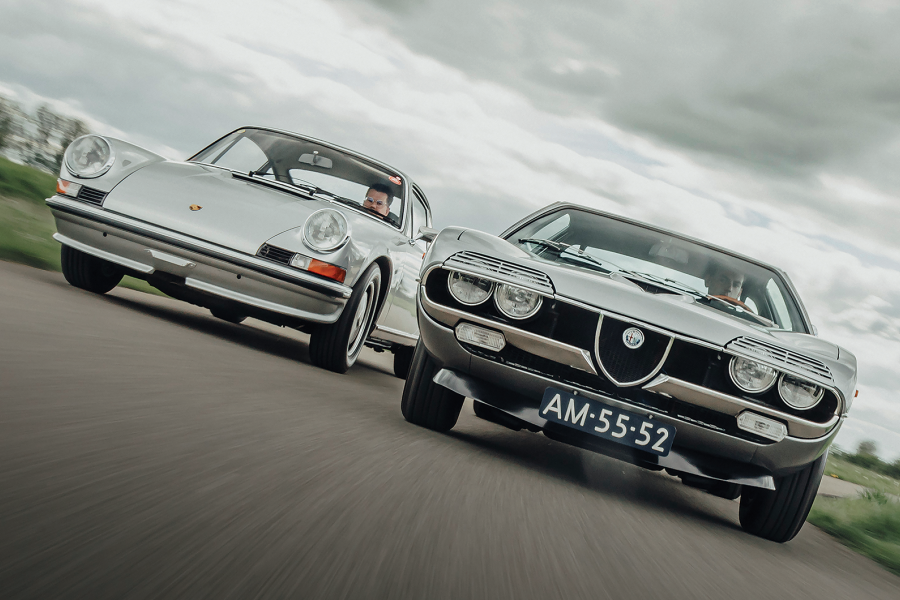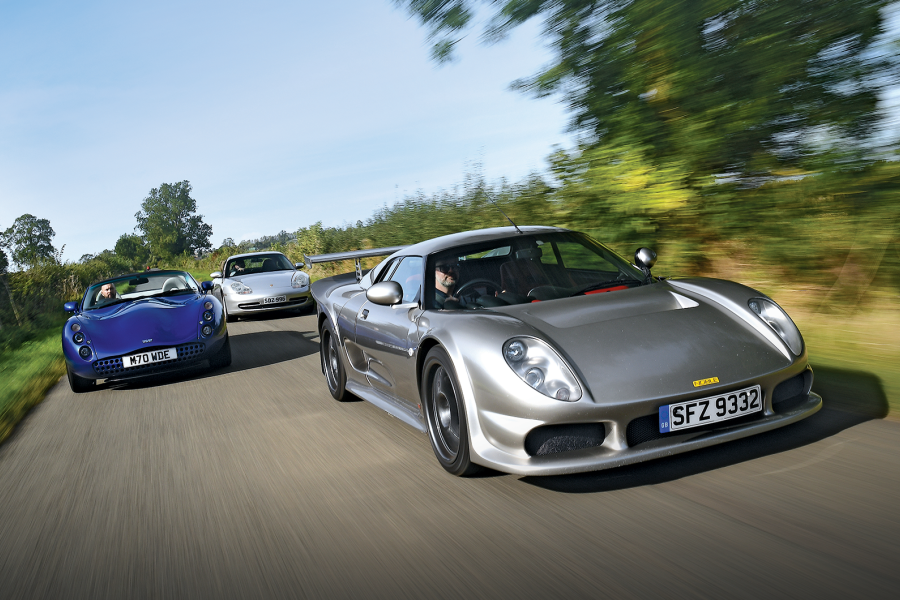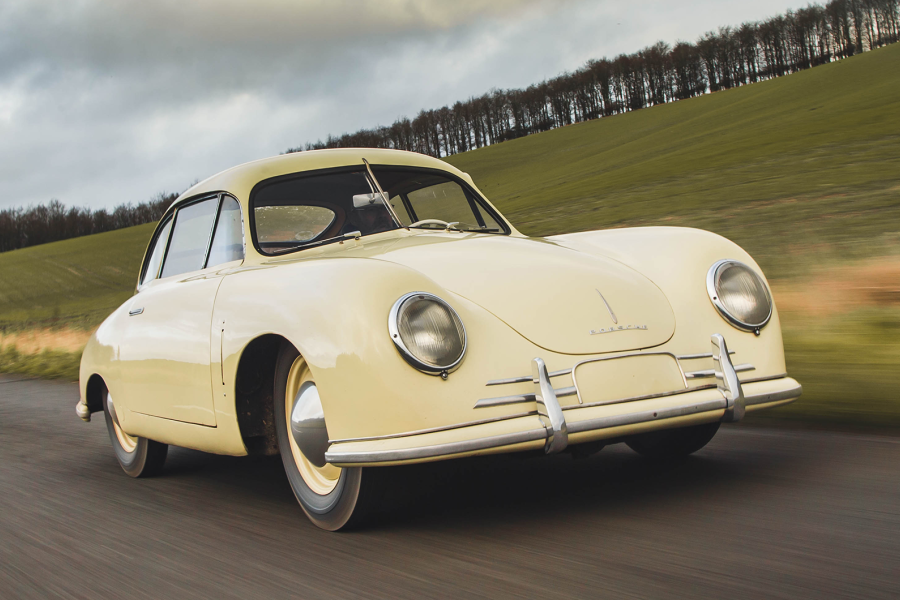At one point I reach fourth (I don’t even know if ‘our’ car has a fifth, which some do) and the performance is never in doubt, but the brakes are – the pedal’s travel is long and spongey, and the stopping power feels decidedly mediocre.
Given that I can sense the 917 lifting up and feeling skittish over standing water, I’m in no mood to push my luck here, so I just enjoy the experience, driving as hard as I feel comfortable while I soak up this bucket-list moment.
Crossing the finish line in the Porsche 917K
Rolling back into the pits, Richard Attwood is standing there, waiting to ask what I think, as if this is some fuggy jet-lag fantasy.
I’m just glad to get the 917 back in one piece and to be one of the few to have experienced it.
It’s incredible to think that in similar conditions in 1970, Attwood and Herrmann beat the world.
Images: Marc Urbano
Thanks to Richard Attwood, Gijs van Lennep, and Porsche AG
A record Le Mans victory remembered
Gijs van Lennep took the second and final win for the Porsche 917 at Le Mans in 1971, driving a 4.9-litre Short-tail in Martini colours with teammate Helmut Marko.
“I did 22 races in the 917, more than anyone – Le Mans, Interserie, two Can-Am races – and it was one of my favourite cars,” van Lennep enthuses.
“I was never afraid of any understeer or oversteer because it was so nicely balanced, and you could drive it on the throttle fantastically because it had a 100% locking limited-slip differential.
“But I was lucky not to drive it in 1969, when they hadn’t sorted the aerodynamics! It felt very good already in 1970, and then in 1971 it improved again with the 5-litre flat-12 instead of the 4.5.”
Gijs van Lennep shared his Porsche 917K Le Mans victory with Helmut Marko – who is today an advisor to the Red Bull Racing Formula One team © Getty Images
Van Lennep’s Le Mans debut came in 1970 with privateer David Piper, the pairing running second after 10 hours when Piper crashed the 917.
Van Lennep had proved his ability, however, and was promoted to the works-supported Martini team for 1971 alongside Marko. The B-team provided stiff internal competition, just as engineer and 917 driving force Ferdinand Piëch liked it.
“John Wyer had the official factory team, but the Martini team had all the factory Porsche people – Mr Dechent was officially our team boss but he wasn’t really in charge,” van Lennep recalls.
“We had people such as Wolfgang Flegel, Helmuth Bott, all the factory guys. It was a little bit Gulf against Martini.”
The Porsche 917’s engine fan was known to be troublesome, and the Gulf cars were set back by breakages at Le Mans
Neither van Lennep nor Marko knew their number 22 car had a new magnesium chassis, which had been prone to failure during testing.
“The welding was difficult and the first car they tested at Weissach broke after three or four hours,” reveals van Lennep.
“Our car had different welding and was tested for 12 hours and didn’t break, but not 24 hours. I didn’t feel angry after finding out it was magnesium, not at all. If Porsche says you have to race, you race.”
Van Lennep and Marko qualified fifth, five seconds adrift of Pedro Rodríguez’s JWA 917 pole time.
The Porsche 917’s drilled brakes were fragile and faded quickly
After six hours, JWA Porsches ran 1-2-3, but every JWA car suffered setbacks in the night, and both other Martini entries had cooling fan trouble, so number 22 took the lead after 12 hours – partly because the mechanics proactively ensured its fan wouldn’t fail.
“The fan was known to break and that was the end of the engine,” recalls van Lennep.
“So at every pitstop, starting in the evening, they’d change one bolt – there were four – so it was no problem and we could use 8400rpm.” Instead, the brakes proved to be the chink in the 917’s armour.
“It was the old circuit with White House, the quick left-hander,” says van Lennep.
Gijs van Lennep celebrating his victory after the 1971 24 Hours of Le Mans © Getty Images
He continues: “Six hours before the end we ran out of brakes more or less: they were thinner, so they’d get hot.
“We were two laps in front of the John Wyer car but knew that if we changed discs we wouldn’t win, so we decided to lift early, not to brake so much and hope for the best.
“It was the first time we drove with drilled brakes and you can still see all the little cracks in the discs on the car in the Porsche Museum – it’s just as it was after the race.”
Only 12 finishers were classified in the results, but van Lennep and Marko won Le Mans at a record speed and set a new distance record that would endure for nearly 40 years.
READ MORE
Buyer’s guide: Porsche 928
Porsche four all: celebrating the 912E, 912 and 914
Mazda at Le Mans: 30 years on
Ben Barry
Ben Barry is a contributor to Classic & Sports Car



